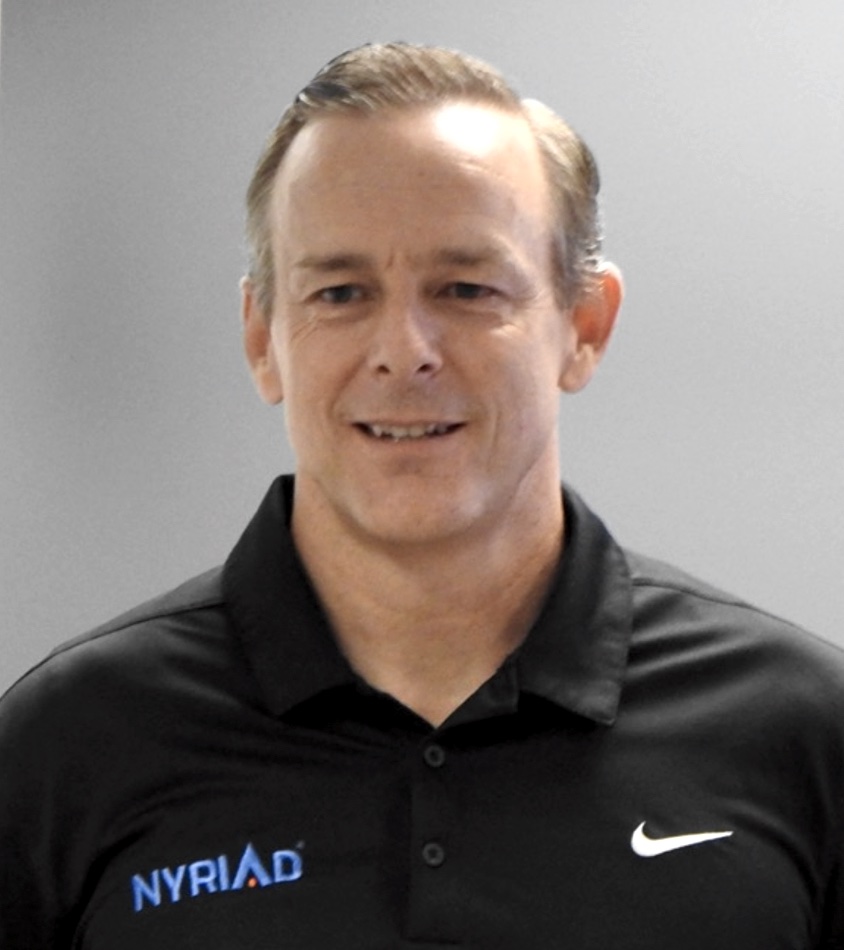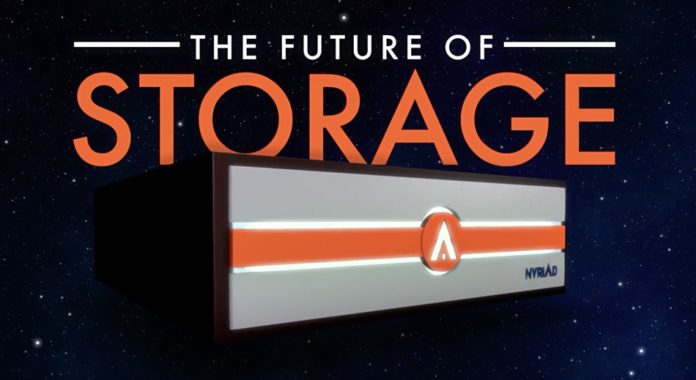Two years after an exec leadership shakeup at Nyriad, the GPU controller-based block array startup is back on the road with customers, a channel, some market traction and fundraising plans.
Update: B-round funding corrected. 7 June 2023.
Nyriad, originally based in New Zealand, has a unique proposition. Its array controller, we’re told, uses GPUs and applies their parallel processing to achieve high data read and write rates with strong data integrity. For a variety of reasons it didn’t do as well as expected, and Matthew Simmons and his co-founding CTO parted ways with the company.
A US HQ was set up, board member and ex-Micron storage business boss Derek Dicker was appointed as CEO in March 2022 and he set about steadying the ship.

Dicker and his team told an IT Press Tour briefing session that Nyriad has recovered and is showing it can sell and execute. There is a pipeline of more than 24 prospects and Nyriad occupies a market position between disk-based arrays and more expensive and faster flash-based SANs. Nyriad says it provides near-flash performance from a smaller set of disk drives than legacy hybrid arrays.
It says it’s not replacing flash but occupying a more cost-effective midpoint in the disk to flash array spectrum. Nyriad claims it’s cheaper, more consistent in IO performance, better at drive rebuilds, and uses far less overhead than RAID-protected disk-based arrays.
This technology was devised to ingest torrents of data from radio astronomy receiving dishes in a mooted Square Kilometre Array (SKA) with a New Zealand presence. The focus was on delivering high sequential bandwidth with assured data integrity, but the SKA initiative ran into problems. New Zealand withdrew but Nyriad developed a block protocol disk storage array controller and pitched it to the market.
The current product is a dual-controller chassis hooked up to a Western Digital disk drive enclosure. The controllers use Nvidia GeForce 86000 GPUs and are configured in an active:passive set-up. They have 198GB of DRAM and 92GB of NVDIMMs, providing an incoming data landing zone, and can output 20GBps of sustained read and write performance. Data protection is by erasure coding, with the GPUs processing the calculations. There can be from 3- to 20-drive parity in a single erasure code group. Performance is sustained when there are multiple drive failures.
A Nyriad array can have 3.6PB from the controllers and disk chassis in 16U of rack space providing a single storage tier. The company claims it can outperform hybrid HDD/SSD competitors, including AFAs in some cases, with concurrent workflows and a multi-workload system.
Dicker said it has a market presence in numerous areas including high-performance computing, media and entertainment.
We were presented with details about three customers:
- Digital Image – video editing and rendering. 4K and 8K. Three separate post-production, archive and rendering storage systems collapsed onto Nyriad to save money, including a Dell all-flash array. Can edit 8K footage online. About 1PB usable capacity.
- Trinity Broadcasting Network – 1PB usable and 2.1PB useable.
- Top-10 US university – Nyriad took in backup data at same rate as an AFA and restored it faster. We were not told if it was a FlashBlade AFA that was beaten in restore speed.
Nyriad does not do deduplication as that can be carried out by upper layer software in the stack.
Nyriad has a meet-in-the channel deal with ThinkParQ and its BeeGeeFS parallel file system, and also works as a storage base for ZFS and Storage Scale. Data services like snapshots and replication may be added through partner deals.
Dicker told the briefing that Nyriad is expanding its geographic coverage and wants to add more distributors. It’s also working on a MinIO white paper, saying it can operate with an 8-9GBps ingest rate in MinIO environments.
Nyriad has previously raised $63 million through its prior Series A financings, and it is seeking $10-$14 million in B-round funding, of which $12 million+ has already been committed.








